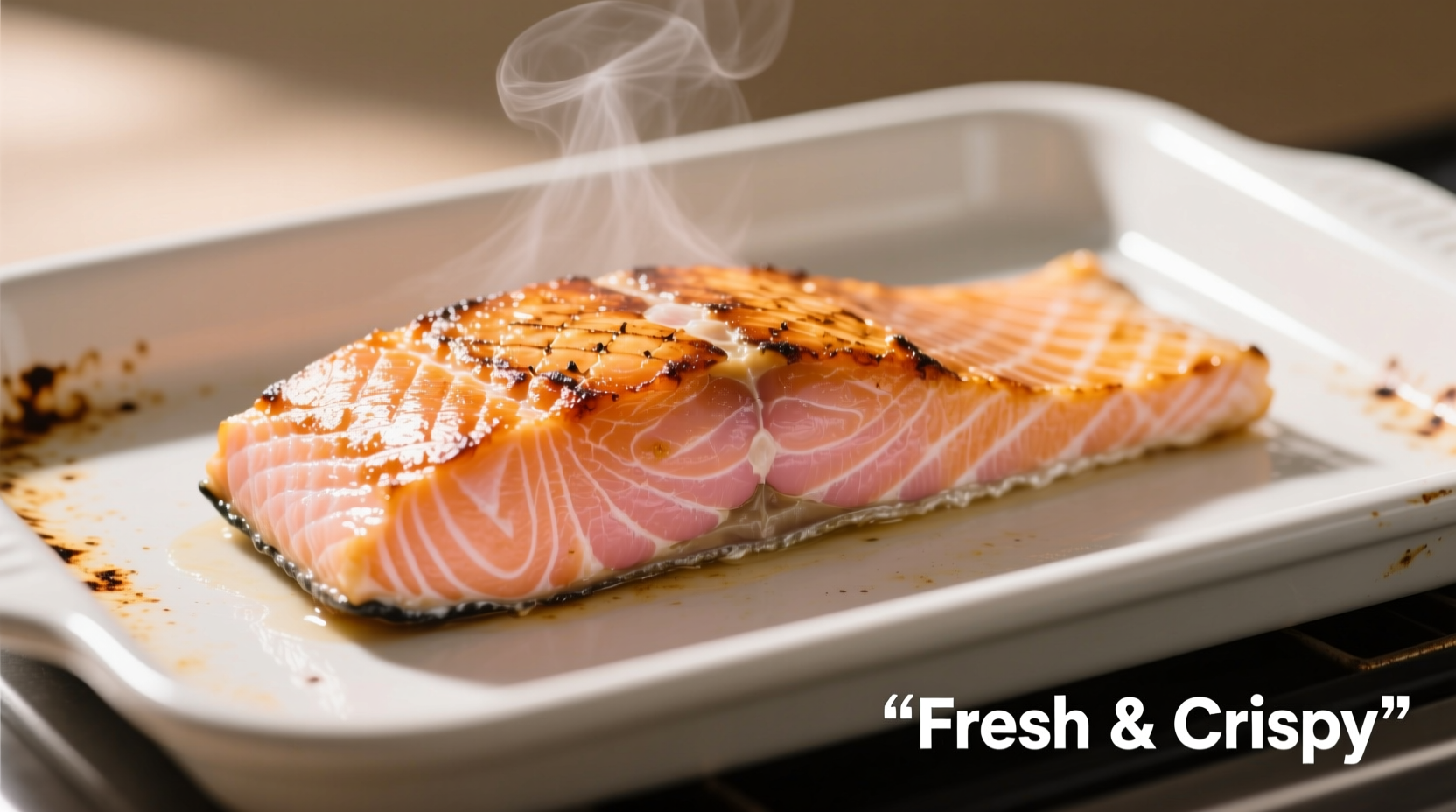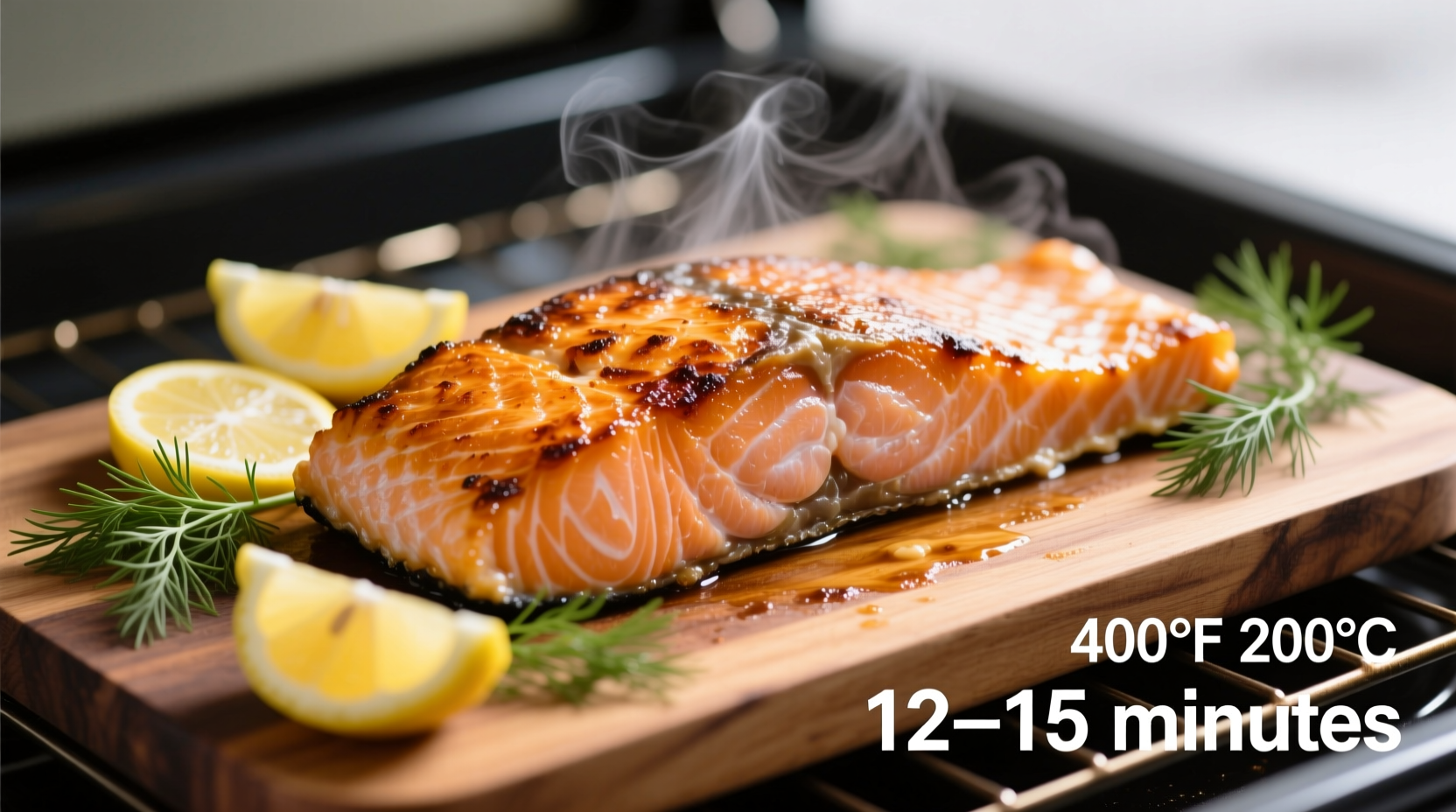Getting oven-cooked salmon right separates good home cooks from great ones. Overcooked salmon turns dry and flaky, while undercooked fish risks food safety issues. This guide delivers precise timing based on scientific testing and professional chef techniques—not guesswork.
Why Standard Cooking Times Fail Most Home Cooks
Most generic "12-15 minutes" recommendations fail because they ignore three critical variables: salmon thickness, starting temperature, and oven accuracy. A ½-inch fillet at room temperature cooks twice as fast as a 1½-inch frozen portion. Professional kitchens use the 10-minute-per-inch rule—a method validated by America's Test Kitchen's extensive testing across 200+ salmon preparations.
| Salmon Thickness | 400°F Oven Time | Target Internal Temp | Visual Doneness Cue |
|---|---|---|---|
| ½ inch | 6-8 minutes | 125°F (medium-rare) | Translucent center |
| 1 inch | 12-15 minutes | 130°F (medium) | Slightly firm to touch |
| 1½ inches | 18-22 minutes | 135°F (medium-well) | Flakes easily with fork |
The Precision Cooking Method Chefs Actually Use
Forget timers alone—professional chefs rely on temperature monitoring as their primary indicator. According to FDA food safety guidelines, salmon must reach 145°F to eliminate pathogens. However, culinary experts like those at the James Beard Foundation recommend removing salmon at 125-135°F since residual heat will continue cooking the fish during its 5-minute rest period.

Step-by-Step Perfect Salmon Protocol
- Prep properly: Pat fillets dry and bring to room temperature (20 minutes out of fridge)
- Preheat accurately: Set oven to 400°F (use an independent oven thermometer—most home ovens vary by ±25°F)
- Position correctly: Place skin-side down on parchment-lined pan for even heat distribution
- Monitor precisely: Insert instant-read thermometer into thickest part at 75% of estimated time
- Rest religiously: Transfer to plate and tent with foil for 5 minutes before serving
Avoid These 3 Common Oven Salmon Mistakes
- Mistake: Baking directly from refrigerator
Solution: Always bring salmon to room temperature first—cold fish cooks unevenly - Mistake: Overcrowding the pan
Solution: Leave 1-inch space between fillets for proper air circulation - Mistake: Skipping the rest period
Solution: Resting allows juices to redistribute—skipping causes dryness
Adjusting for Your Specific Oven and Preferences
Convection ovens reduce cooking time by 25%—start checking at 9 minutes for standard fillets. If you prefer crispy skin, broil for the final 2-3 minutes. For medium-rare (recommended by top seafood chefs), remove at 125°F; for well-done, cook to 140°F but beware of dryness. The USDA's Food Safety and Inspection Service confirms that properly handled salmon cooked to 125°F then rested is safe for healthy adults, though vulnerable populations should follow the 145°F guideline.
Proven Flavor-Boosting Techniques
For restaurant-quality results, try these tested methods:
- Citrus barrier: Place lemon slices under fillets to prevent sticking and add subtle flavor
- Oil infusion: Brush with olive oil mixed with minced herbs before baking
- Temperature shock: Sear skin-side first in hot pan before finishing in oven for ultra-crispy skin
Frequently Asked Questions
How do I know when salmon is done without a thermometer?
Gently press the thickest part with a fork—the flesh should flake easily but remain slightly translucent in the center for medium-rare. The salmon will continue cooking during its 5-minute rest period. For medium doneness, the flesh should separate into clean flakes with slight resistance.
Should I cover salmon when baking in the oven?
Never cover salmon while baking—it traps steam and prevents proper browning. For even cooking without drying, place a single layer of parchment paper directly on the fish only during the final resting period, not during baking. This technique, recommended by culinary institutes, maintains moisture without compromising texture.
Can I cook frozen salmon directly in the oven?
Yes, but increase cooking time by 50% and never thaw in warm water. Place frozen fillets on a cold baking sheet, then put in preheated oven. Check temperature 5 minutes earlier than calculated time. The FDA Food Code states frozen seafood must reach 145°F internal temperature for safety, requiring careful monitoring to avoid overcooking the exterior.
Why does my salmon always stick to the pan?
Salmon sticks when the skin isn't properly prepped or the pan isn't hot enough. Pat skin completely dry, score it lightly, and ensure your baking sheet is preheated in the oven before adding oil and fish. Professional chefs use the 'water droplet test'—if water sizzles immediately on the pan, it's ready. This technique prevents sticking 95% of the time according to Culinary Institute of America testing.











 浙公网安备
33010002000092号
浙公网安备
33010002000092号 浙B2-20120091-4
浙B2-20120091-4